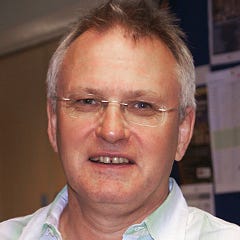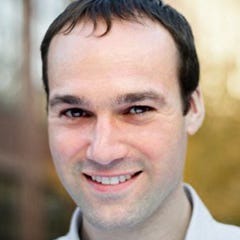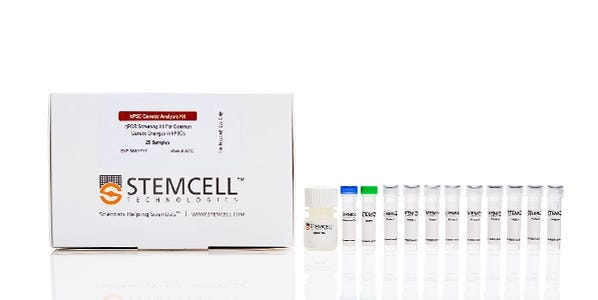Genomic Integrity and Stability: A Critical Attribute of Pluripotent Stem Cell Quality

As we move toward clinical applications using the differentiated derivatives of human pluripotent stem cells (hPSCs) for regenerative medicine, there has been a renewed focus on cell quality. Of particular concern is the genomic stability of hPSCs, which frequently acquire recurrent abnormalities in a non-random and sporadic manner. The mechanisms behind these cytogenetic changes remain unknown. Gaining a greater understanding of the mechanisms behind these cytogenetic changes and developing more sensitive detection methods may be key in improving the safety and efficacy of future therapies.
That recurrent abnormalities identified in hPSCs are also observed in human cancers raises safety concerns over using these cells for therapeutic applications. The most commonly affected chromosomes in hPSCs include 1, 8, 10, 12, 17, 18, 20, and X. Although steps can be taken to minimize the appearance of variants within an hPSC culture, current cytogenetic analysis methods cannot detect low levels of mosaicism within a culture.
Key Publications
- This International Stem Cell Initiative meeting report summarizes the current concerns surrounding the genomic instability of hPSCs and its impact on future clinical applications.
Andrews PW et al. (2017) Assessing the safety of human pluripotent stem cells and their derivatives for clinical applications. Stem Cell Reports 9(1): 1-4. - Merkle et al. identified recurrent mutations in tumor suppressor P53 upon sequencing the exomes of over 100 independent human embryonic stem (hES) cell lines. The authors conclude that careful genetic characterization of hPSCs should be carried out before clinical use, as these cancer-associated mutations in hPSCs may go unnoticed using current detection methods.
Merkle F et al. (2017) Human pluripotent stem cells recurrently acquire and expand dominant negative P53 mutations. Nature 545(7653): 229-33. - Recurrent genetic abnormalities in hPSCs include aberrations in chromosomes 1, 12, 17 and 20. The study systematically evaluated the sensitivity G-banding, fluorescence in situ hybridization (FISH) and quantitative and digital droplet PCR. The detection limits for these methods were around 5-20%, thus cultures analysed using these methods and determined karyotypically normal could harbor undetected low-level mosaicism. Baker et al. conclude, “Recognition of this point is crucial for developing strategies for routine laboratory practice as well as the regulation for the use of hPSCs in regenerative medicine.”
Baker D et al. (2016) Detecting genetic mosaicism in cultures of human pluripotent stem cells. Stem Cell Reports 7(5): 998-1012.
On-Demand Webinars
Genetic Stability of Human Pluripotent Stem Cells
Human pluripotent stem cells (hPSCs) are valuable tools for modeling human disease, as well as a source of differentiated cells for use in regenerative medicine and drug discovery. An essential prerequisite for using hPSCs in medicine is the assurance of genetic stability over long-term maintenance of hPSCs. However, hPSCs can adapt in vitro by acquiring genetic changes that render them less susceptible to differentiation and/or death. The presence of genetic changes in hPSCs coupled with their increased growth rates is reminiscent of the defining features of cancer cells, thus raising concerns about the safe use of hPSCs in clinical applications. Investigating the causes and consequences of genetic changes in hPSCs will help inform approaches to minimize their occurrence in hPSC cultures.
View this webinar presentation by Prof. Peter Andrews and Dr. Ivana Barbaric from the University of Sheffield, who discussed the causes and consequences of genetic changes in hPSCs.

Dr. Peter Andrews
The University of Sheffield

Dr. Ivana Barbaric
The University of Sheffield
- Recurrent genetic changes in hPSCs
- The role of mutation and selection in appearance and persistence of genetically variant hPSCs in culture
- Selection pressure in single-cell passaging of hPSCs: multiple bottlenecks restrict colony formation
- Detection of mosaicism in hPSC cultures
- Implications of genetic changes in hPSCs on regenerative medicine
Dr. Peter Andrews
The University of Sheffield
Peter Andrews obtained a BSc in Biochemistry from the University of Leeds in 1971, and a D.Phil. in Genetics from the University of Oxford in 1975. Following postdoctoral research at the Institut Pasteur in Paris and the Sloan Kettering Institute in New York, he was a research scientist on the staff of the Wistar Institute of Anatomy and Biology in Philadelphia from 1978 to 1992. At the Wistar Institute he characterized the properties of human embryonal carcinoma (EC) cells, the malignant counterparts of human embryonic stem (ES) cells, and identified surface marker antigens now extensively used for monitoring human ES cells. He demonstrated marked differences between these human cells and the equivalent cells from the laboratory mouse. In 1992 he was appointed to the Arthur Jackson Chair of Biomedical Research in the University of Sheffield, where he is currently co-director of the Centre for Stem Cell Biology. His research continues to focus on the biology of pluripotent human stem cells, and particularly their mechanisms of fate determination, as well as their susceptibility to genetic change upon long-term culture. Among his current activities he coordinates the International Stem Cell Initiative, which has worked to characterize standard markers and culture conditions for human ES cells, and directs the Pluripotent Stem Cell Platform, a translational consortium of research groups in the UK working under the UK Regenerative Medicine Platform.
Dr. Ivana Barbaric
The University of Sheffield
Ivana Barbaric graduated in Molecular Biology from the University of Zagreb and gained her D.Phil. from the University of Oxford in 2006. She then joined Professor Peter Andrews’ group at the University of Sheffield to study the mechanisms that underlie human pluripotent stem cell (hPSC) self-renewal and differentiation. In 2013, Ivana was awarded a Wellcome Trust discipline hopping fellowship to engineer controlled microenvironments in order to understand mechanical and chemical cues influencing stem cell fate. She was appointed as a Lecturer and Principal Investigator at the Centre for Stem Cell Biology, the University of Sheffield in 2014. Her research is focused on investigating the causes and consequences of genetic changes in hPSCs, and studying how signals from the stem cells microenvironment affect their fate decisions and patterning. Her group is also developing protocols for production of differentiated cells from hPSCs for uses in regenerative medicine.
On Ivana
What’s the focus of your current work?I am interested in the mechanisms that lead to genetic changes in human pluripotent stem cells (hPSCs) and the functional implications that genetic changes impart on hPSC phenotype and behaviour. Resolving this issue may have implications for the use of hPSCs in regenerative medicine and disease modeling.
What influenced you to pursue research in this field?
During my DPhil, I was analysing the genetic basis of osteoporosis using a mouse as a particularly tractable genetic system. At the time, I also used mouse embryonic stem cells as a tool to produce genetically engineered mice. In doing so, I became fascinated by these truly remarkable cells and their ability to make any cell type in the body. I then decided that, rather than using embryonic stem cells as a tool in my work, these cells would become the main focus of my future research. Hence, following the completion of my DPhil I took up a postdoctoral position with Peter Andrews at the Centre for Stem Cell Biology in Sheffield, where I am now a Lecturer and PI.
What’s the best lesson Stephen Brown, your PhD supervisor, taught you?
Science is fun! Although it can feel tough at times, if you are passionate about your work, you will find motivation and perseverance to carry it through.
What’s it like being a scientist and lecturer at the Centre for Stem Cell Biology in University of Sheffield?
The Centre for Stem Cell Biology is a fantastic place to work and undertake research. We have a great pool of researchers carrying out fundamental and applied research on human pluripotent stem cells. Our common goal is to advance hPSC-based cell therapies towards clinical translation.
On PSC Research
What do you consider to be the most important advance(s) in stem cell research over the past 5 years, and what advances do you hope the field will achieve in the next 5 years?Whole Exome Sequencing Reveals Selective Pressures and Dominant Negative Mutations in hPSC Cultures
View this webinar presentation by Prof. Kevin Eggan and Dr. Florian Merkle, who discussed genetic variations in human pluripotent stem cell (hPSC) cultures revealed by whole exome sequencing of more than 100 of the world’s hES cell lines, and the importance of maintaining high-quality hPSCs for regenerative medicine and other applications.
The research discussed in the webinar is now published in Nature: Human pluripotent stem cells recurrently acquire and expand dominant negative P53 mutations.

Prof. Kevin Eggan
Harvard University

Dr. Florian Merkle
University of Cambridge
- Whole exome sequencing of more than 100 of the world’s hES cell lines
- Lessons learned about their intrinsic biology
- Spontaneous acquisition or enrichment of p53 mutations
- Importance of maintaining high-quality hPSCs for developmental biology, disease modeling, and regenerative medicine applications
Prof. Kevin Eggan
Harvard University
Dr. Kevin Eggan obtained his B.Sc. in Microbiology at the University of Illinois in 1996, and a Ph.D. in Biology from the Massachusetts Institute of Technology in 2003. During his Ph.D. training, he actively pursued projects focused on cloning, stem cells and reprogramming after nuclear transfer under the guidance Dr. Rudolf Jaenisch. He then conducted a collaborative study with Dr. Richard Axel, a Nobel Prize winner at the Howard Hughes Medical Institute. In 2003, Kevin moved to Harvard University as a junior fellow and then became an assistant professor of Molecular & Cellular Biology at the Stem Cell Institute in 2005. He was promoted to Professor in the Department of Stem Cell and Regenerative Biology in 2012. Kevin is also the Director of the Stem Cell Program at the Stanley Center for Psychiatric Research at the Broad Institute, a Junior Member of the Howard Hughes Medical Institute, and CSO of the New York Stem Cell Foundation. Currently, his research focuses on understanding the contribution of environmental and genetic factors in the development of disease, as well as exploring stem cells as a renewable source of motor neurons for studying mechanisms leading to neural degeneration.
Dr. Florian Merkle
University of Cambridge
Dr. Florian Merkle obtained his B.Sc. in Biology from the California Institute of Technology in 2002, and a Ph.D. at the University of California, San Francisco in 2007. During his Ph.D. training in the laboratory of Dr. Arturo Alvarez-Buylla, he determined the lineage and potential of neural stem cells in the postnatal mouse brain. Florian then joined the laboratories of Dr. Kevin Eggan and Dr. Alex Schier at Harvard University as a postdoctoral fellow, where he developed robust and efficient methods for genome engineering in human pluripotent stem cells. Since 2015, Florian has been a Principal Investigator at the University of Cambridge and an affiliate member of the Cambridge Stem Cell Institute. His laboratory at the Wellcome Trust-MRC Institute of Metabolic Science focuses on using pluripotent stem cells to model human diseases, such as obesity and narcolepsy, by investigating how environmental conditions and genetic variants contribute to disease.
Checking Your Cell Quality Doesn't Have to Be Difficult
hPSC Genetic Analysis Kit
The hPSC Genetic Analysis Kit contains primer/probe mixes to detect recurrent karyotypic abnormalities reported in hPSCs. This qPCR-based kit enables the genetic screening of multiple hPSC lines in a rapid and cost-effective manner.
Understanding the ISSCR Standards for Human Stem Cell Use in Research
Learn how STEMCELL can help you apply the Standards to improve the quality and reproducibility of your research with a curated collection of resources and more standardized practices for genomic characterization. From webinars, to interviews, to articles, you will find the information you need to achieve higher-quality results and more standardized practices. www.stemcell.com/ISSCR-Standards


